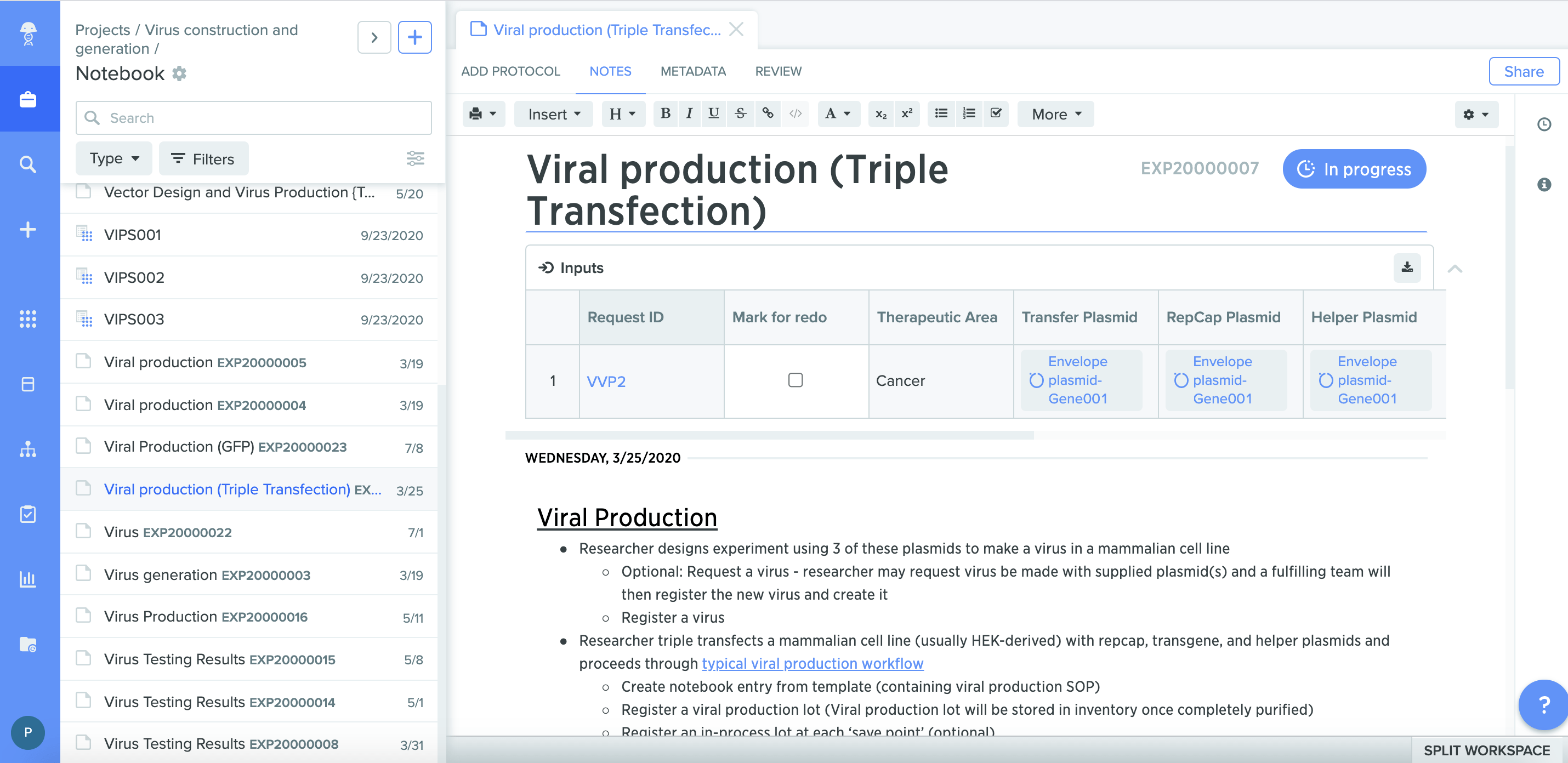How to Organize a Lab Notebook for Growing Biotech Companies

How to Organize a Lab Notebook
Life science companies are adopting modern electronic lab notebooks (ELNs) to speed up note taking and data entry, so their teams can focus on what matters most—conducting mission-critical experiments and identifying opportunities for innovation. However, to maximize the value of your ELN, you first need to know how to organize it.
Having worked with hundreds of life science companies to digitally transform their R&D, we’ve got insider information on how to organize a lab notebook for modern life science—driving efficiency, accountability, and groundbreaking discoveries.
How to Organize a Lab Notebook and Get the Most Out of Your ELN
Establish a project-based structure rather than a researcher-based structure
Unlike paper notebooks where every researcher has their own notebook for data capture, even for collaborative projects, an ELN offers the ability to house all project-related experiments and results together. Establishing a project-based structure lets team members easily navigate experimental history, speeding up your ability to find and share data, set-up your next experiment, and track project progress.
Set up robust, up-to-date templates
Many electronic lab notebooks let you set up templates to make record-keeping more efficient and consistent across users. The trick is to create templates that are rigid enough to ensure that users provide the required information while being flexible enough to cover a range of study types.
Depending on whether your lab is responsible for discovery or development activities, you may want to organize templates in different ways, such as by the type of study (i.e. strain generation, protein extraction, assay optimization), by scale (i.e. small-scale growth, 10L fermenter growth, production scale growth), or by team.
Regardless of how you design and organize your templates, you should develop a control and maintenance plan where each collection of templates has an identified lead who is responsible for developing and editing that set of templates.
Set up standardized naming conventions and metadata fields
Using a uniform file naming convention ensures data is easy to find, which is critical to setting up an ELN that will enable multiple users to collaborate.
One example of a file naming convention is:
Project name_scientists name_date (YYYYMMDD)
For certain types of electronic lab notebook entries, consider including specific metadata about that entry, such as which plasmids are mentioned or sample ID tags. This will give you the flexibility to structure and search by your entries’ metadata as well as provide an additional layer of access and insight into your data.
Set up a robust user permissions hierarchy
Before you implement your electronic lab notebook platform, we recommend maintaining a master list of lab members and their roles and responsibilities on specific projects. This assists with overall lab personnel management, and it’s also useful for mapping out different users’ needs, capabilities, and electronic signature requirements.
While not every ELN can provide different levels of access via permissions, Benchling’s codeless configuration makes it easy to give end-usersRead access to Notebook templates, designate administrators with Write or Admin access, and change permission levels down the line. This ensures that scientists don’t accidentally edit or, worse, delete critical templates, keeping your processes standardized and your data clean.
Benchling reduces time to data entry by 85% with the industry’s most widely adopted cloud notebook for modern life science. With Notebook, you can easily trace and search for notes, records, data, and results—helping your team set up and analyze your experiments faster.
How Benchling Can Help
Note that while the tips we mention here are helpful rules of thumb, how to organize a lab notebook depends on your specific projects, teams, lab instruments, and software ecosystem. Benchling moves beyond the typical definition of an ELN with the Notebook because it is housed within a unified lab productivity platform. With Benchling, you can seamlessly connect your entire workflow to gain scientific, operational, and administrative insights that paper-based systems, legacy ELNs, and point solutions just can’t deliver. Beyond our digital solutions, our implementation team is experienced at helping all types of labs set up Benchling and can provide guidance on how to optimally organize your lab notebook.
Prep your team for getting the optimal digital solution for your lab by reading Benchling’s ELN eBook.
Powering breakthroughs for over 1,200 biotechnology companies, from startups to Fortune 500s
